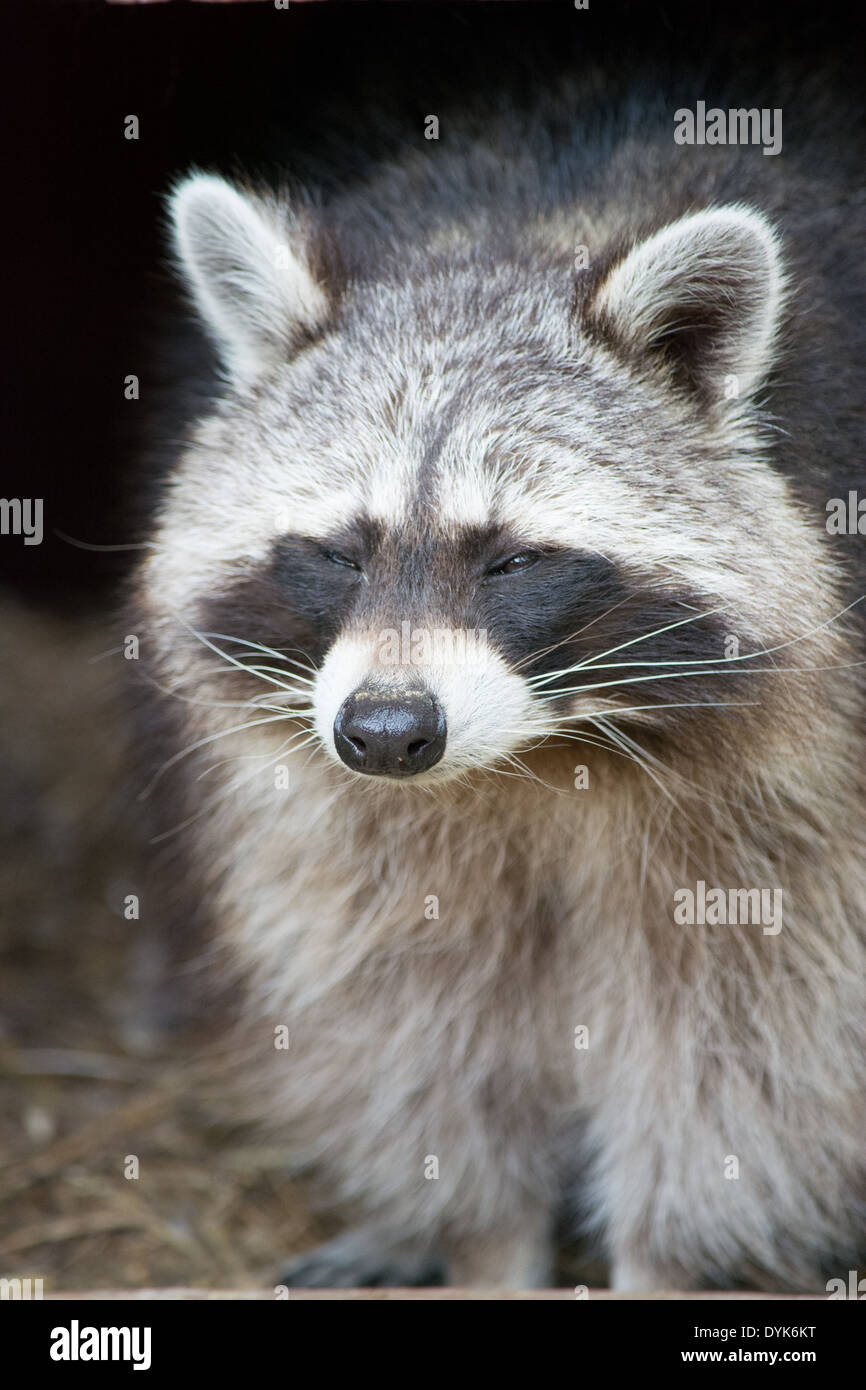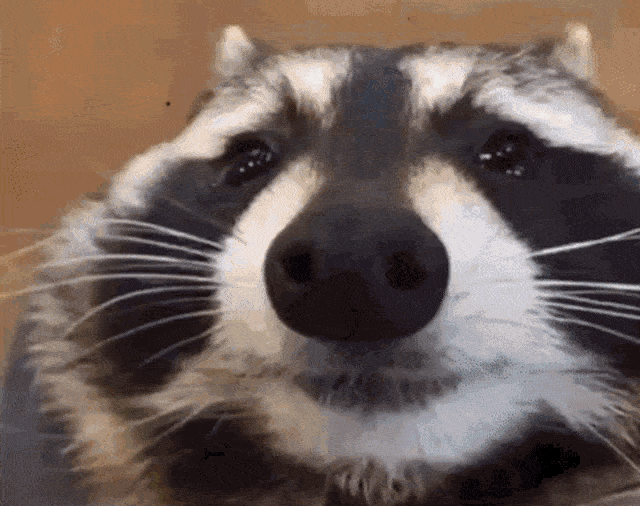Raccoon Eyes At Night: Understanding The Nocturnal Behavior And Adaptations
Raccoons are fascinating creatures that thrive in the night, and their eyes play a crucial role in their nocturnal lifestyle. If you've ever wondered how raccoons navigate so effectively in the dark, this article will provide all the answers you need. Let's delve into the world of raccoon eyes at night and uncover the secrets behind their remarkable night vision.
Raccoons are often seen as clever and adaptable animals, but their ability to thrive in the dark is what truly sets them apart. From their unique eye structure to their behavioral patterns, every aspect of their biology is finely tuned for nighttime survival. Understanding how raccoons use their eyes at night can give us a deeper appreciation of these creatures and their incredible adaptations.
Whether you're a wildlife enthusiast or simply curious about the natural world, this article will provide you with a comprehensive overview of raccoon eyes at night. By the end, you'll have a clearer understanding of why these animals are so well-suited to life after sunset. So, let's get started!
- Sheila Bellush Children Now
- Demi Moore Shingles
- Steve Howey Ex Wife
- 4 Non Blondes Tour
- Sagal Twins Today
Table of Contents
- Introduction to Raccoon Eyes at Night
- The Biology of Raccoon Eyes
- Adaptations for Night Vision
- Raccoon Behavior at Night
- Raccoons and Their Predators
- Common Myths About Raccoon Eyes
- Scientific Research on Raccoon Vision
- Conservation Efforts and Raccoons
- Impact on Ecosystems
- Conclusion
Introduction to Raccoon Eyes at Night
Raccoons are primarily nocturnal animals, meaning they are most active during the night. Their ability to see clearly in low-light conditions is one of the key reasons they thrive in this environment. Raccoon eyes at night are adapted to detect even the faintest light, allowing them to hunt, forage, and navigate with ease.
The structure of a raccoon's eye is quite different from that of humans, enabling it to function optimally in darkness. These animals rely heavily on their vision to survive, and their eyes are equipped with specialized features that enhance their ability to see in the dark. Understanding these adaptations can help us appreciate the complexity of nature and the evolutionary processes that have shaped these creatures.
The Biology of Raccoon Eyes
Structure of the Raccoon Eye
Raccoon eyes have several unique features that contribute to their superior night vision. One of the most important aspects is the presence of a high number of rod cells in their retinas. Rod cells are specialized photoreceptor cells that are highly sensitive to low light levels, making them essential for nocturnal vision.
- Alissa Violet Jason Nash
- When Will Wicked Be Able To Rent
- Sophie Detorres
- Madonna Halloween Costume
- Ugly Dog Names
In addition to rod cells, raccoons also have a reflective layer called the tapetum lucidum behind their retinas. This layer reflects light back through the retina, increasing the amount of light available to the photoreceptor cells. As a result, raccoons can see much more clearly in the dark than humans or other diurnal animals.
Color Vision in Raccoons
While raccoons have excellent night vision, their color vision is not as developed as that of humans. Studies suggest that raccoons may be dichromatic, meaning they can perceive only two colors: blue and green. This limitation is common among nocturnal animals, as color vision is less important in low-light environments.
Adaptations for Night Vision
Raccoons have evolved several adaptations that allow them to see effectively at night. These adaptations include:
- Large pupils that can dilate to allow more light to enter the eye.
- A high concentration of rod cells in the retina for better light sensitivity.
- The presence of the tapetum lucidum to enhance light reflection.
These features work together to provide raccoons with the ability to see clearly in the dark, enabling them to hunt and forage efficiently during the night.
Raccoon Behavior at Night
Foraging Habits
Raccoons are opportunistic feeders, meaning they will eat almost anything they can find. At night, they often search for food in garbage cans, gardens, and other areas where food is readily available. Their keen sense of smell and excellent night vision make them highly effective hunters in the dark.
Interaction with Other Animals
During the night, raccoons may encounter other nocturnal animals such as opossums, skunks, and foxes. While they are generally solitary creatures, raccoons may occasionally form small groups when food is abundant. Their ability to see in the dark helps them avoid potential predators and navigate safely through their environment.
Raccoons and Their Predators
Despite their impressive night vision, raccoons are not immune to predation. Larger animals such as coyotes, bobcats, and great horned owls may prey on raccoons, especially during the night. Raccoons rely on their sharp senses and agility to evade these predators, but their ability to see in the dark is undoubtedly a crucial factor in their survival.
Common Myths About Raccoon Eyes
There are several myths surrounding raccoon eyes and their abilities. For example, some people believe that raccoons can see in complete darkness, but this is not true. While they have excellent night vision, they still require some level of light to see. Another myth is that raccoons have "glowing eyes," which is actually a result of the tapetum lucidum reflecting light.
Scientific Research on Raccoon Vision
Scientists have conducted numerous studies to better understand the vision of raccoons. These studies have revealed fascinating insights into the structure and function of raccoon eyes, as well as their adaptations for nocturnal life. For example, research has shown that raccoons have a higher density of rod cells in their retinas compared to humans, which explains their superior night vision.
One notable study published in the journal Journal of Comparative Physiology A examined the color vision of raccoons and found evidence to support the theory that they are dichromatic. This research helps us understand how raccoons perceive the world around them and highlights the importance of their visual adaptations for survival.
Conservation Efforts and Raccoons
Raccoons are considered a species of least concern by the International Union for Conservation of Nature (IUCN), meaning they are not currently at risk of extinction. However, habitat loss and urbanization pose potential threats to raccoon populations in certain areas. Conservation efforts focus on preserving natural habitats and promoting coexistence between raccoons and humans in urban environments.
Impact on Ecosystems
Raccoons play an important role in ecosystems as both predators and prey. They help control populations of insects and small mammals, while also serving as a food source for larger predators. Their presence in an ecosystem can have far-reaching effects, influencing the behavior and distribution of other species.
Conclusion
Raccoon eyes at night are a marvel of evolution, perfectly adapted for life in the dark. From their high concentration of rod cells to the reflective tapetum lucidum, every aspect of their vision is designed to help them thrive in nocturnal environments. Understanding these adaptations not only deepens our appreciation for these fascinating creatures but also highlights the importance of preserving their natural habitats.
We invite you to share your thoughts and questions in the comments section below. If you enjoyed this article, consider sharing it with others who might find it interesting. Additionally, feel free to explore other articles on our site to learn more about the natural world and the incredible creatures that inhabit it.

racoon closing eyes Stock Photo Alamy

Racoon Gif GIFcen

Calfiornia Wildlife Series Raccoon at Night Stock Image Image of